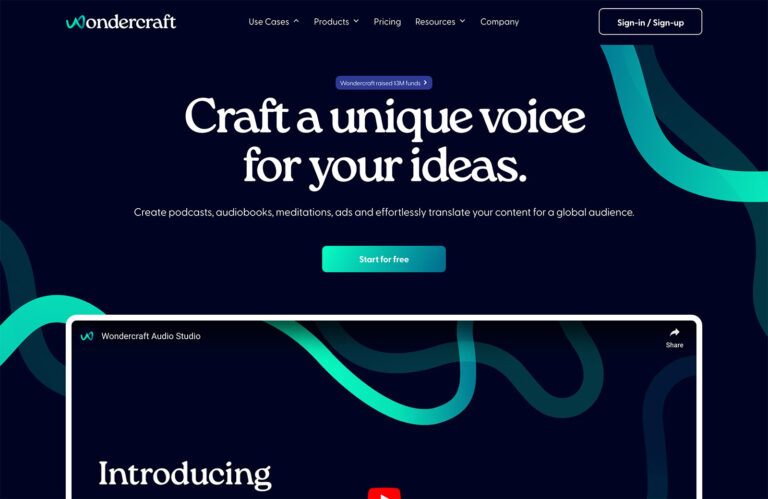
5 days ago
Consumer expectations for a responsive, immersive, and visually appealing website experience have never been higher. In fact, 72% report that a badly designed website affects their opinion of a business.
If your website is badly designed, you may lose potential customers, waste money, increase bounce rates, decrease conversion rates, and damage your search engine optimization (SEO) rankings.

So, it’s obvious a bad website design can negatively affect your business. In this article, we’ll look at what makes website design bad and four of the effects it can have.
What Makes a Bad Website Design?
Web design is about layout, branding, user interface (UI), content, and user experience (UX). Here are a few examples and areas of improvement:
- Lack of mobile-friendliness. Sticking to one device type is an outdated web design approach. 85% of adults expect a website to look as good on mobile as on desktop.
- Difficult to use or navigate. This makes it difficult for customers to find their desired products or information. 42% of people will leave a website because of its poor functionality.
- Inconsistent design or branding. Visual appearance is one of the first elements visitors notice when opening your site. So, a signature color, like Starbucks green or Cadbury purple, can increase brand recognition by 80%.
- Cluttered layout. 38% of users will leave a website that has an unattractive layout. Consider removing unnecessary elements and reducing visual clutter.
- Broken links. 73.72% of those who reach a 404 error page will leave the website and not return.
- Excessive pop-ups or adverts. This disrupts a visitor’s browsing journey. 58% said pop-up ads that disrupt the web experience are “the most annoying type of digital ad.”
- Slow loading speeds. Nearly 70% of consumers admit that page speed impacts their readiness to buy from an online retailer.
Daniel K Cheung, senior SEO manager at Adobe, said: “As consumers are becoming more time-poor and attention spans are decreasing, pages that don’t load immediately can mean that a customer will refuse to purchase from [that] site.”
To avoid having a bad website design, prioritize user experience, conduct usability testing, gather feedback, keep up with design trends, optimize website speed, use straightforward navigation, and ensure visual consistency and correctness.
4 Negative Effects A Bad Website Design Has On Your Business
Reduces Your Credibility
A consumer’s judgment of your website’s credibility is 75% based on its overall design. This means your business and its products or services are judged by the quality and professionalism of your website design.
Visitors will question whether your business is credible if your website has content errors, low-quality images, inconsistent branding, or slow page loading speeds.
In addition, if your website needs to be updated, lacks content, or has broken links, visitors may assume you’re no longer an active business.
Angela Escobar, content manager at HPOne, said: “Two essential factors for building your credibility are trustworthiness and expertise. If your site convinces visitors of your experience and knowledge (expertise) and that the information they find on your site is honest and reliable (trustworthiness), you have the power to influence their behaviors and attitudes toward your brand. They’ll give you their personal information, revisit your site, and hold positive opinions about you and your brand. If your site lacks credibility, expect the opposite reactions from visitors.”
Wastes Your Money
If your bad website design stops or deters potential customers from finding you, exploring your products or services, and taking action, you’re losing sales and revenue. You also waste money on:
- Marketing strategies. It’s a shame to spend money on marketing to attract consumers who then choose not to purchase anything due to a badly designed website.
- Website design. If you’ve paid someone to design your website and it’s still so bad that visitors aren’t converting into customers, then what a waste of money.
- Web hosting. If you aren’t fixing broken links, updating content, and optimizing your website for mobile, then there’s no point in hosting your website online.
- Content. If you’re paying someone to write blog content that is full of spelling and grammatical errors, you need to reevaluate.
Causes The Loss Of Potential Customers
88% of consumers said they are less likely to return to a website after a negative online experience. This means visitors frustrated with slow page loading speeds, excessive pop-ups or ads, broken links, or navigation issues will leave your website and never come back.
Consumers want to achieve goals quickly in a few easy-to-understand steps. Would you like to spend time digging through a cluttered, unorganized, and badly designed website when you can buy something from another company in just a few clicks?
Lauren Pottle, digital marketing consultant at Wizard Pi, said: “Deterring these visitors from your website will automatically decrease the chance of any business from them if they are not impressed with what they see. If someone can’t comprehend how your website functions, then they are likely to check out your competitors and opt for their products or services instead – something no one wants to experience!”
Affects Your SEO Rankings
When a company decides to go online, it must create an SEO strategy.
However, bad website design can sabotage the efforts of your SEO strategy, thanks to some of Google’s ranking factors, such as:
- Quality Content. Google ranks highly for high-quality, informative, and relevant content.
- User Experience. Google ranks highly for easy-to-use and enjoyable websites that provide a good experience for the visitor.
- Bounce Rate. Only some people agree that bounce rate matters for SEO, but pages with a high bounce rate probably don’t rank well for that keyword.
- Page Loading Speed. Google now uses actual Chrome user data to evaluate loading speed.
- Site Architecture. Google can thematically organize content using well-designed and structured website architecture.
- Grammar and Spelling. Proper grammar and spelling are quality signals that you are a professional.
- Mobile Usability. Google uses the mobile version of a website’s content for indexing and ranking, prioritizing those that mobile users can easily use.
Consider all these factors and more if you want to score high in search rankings. If you don’t, Google will deprioritize your website on its search engine results pages (SERPs), and customers will not be able to find you.
Wrapping Up
Good website design is crucial as it enhances user experience and positive impressions, establishes trust and credibility, improves search engine rankings, increases conversions, and keeps visitors engaged.
So, before you go, ask yourself when you last updated your content or contact information, how easy and efficient your website is to navigate, and whether consumers can see what you’re offering.
Dmytro Spilka
Dmytro is a CEO at Solvid and founder of Pridicto. His work has been published in Creative Bloq, Shopify, Zapier, Make Use Of, Mention, WordStream, and Campaign Monitor.





